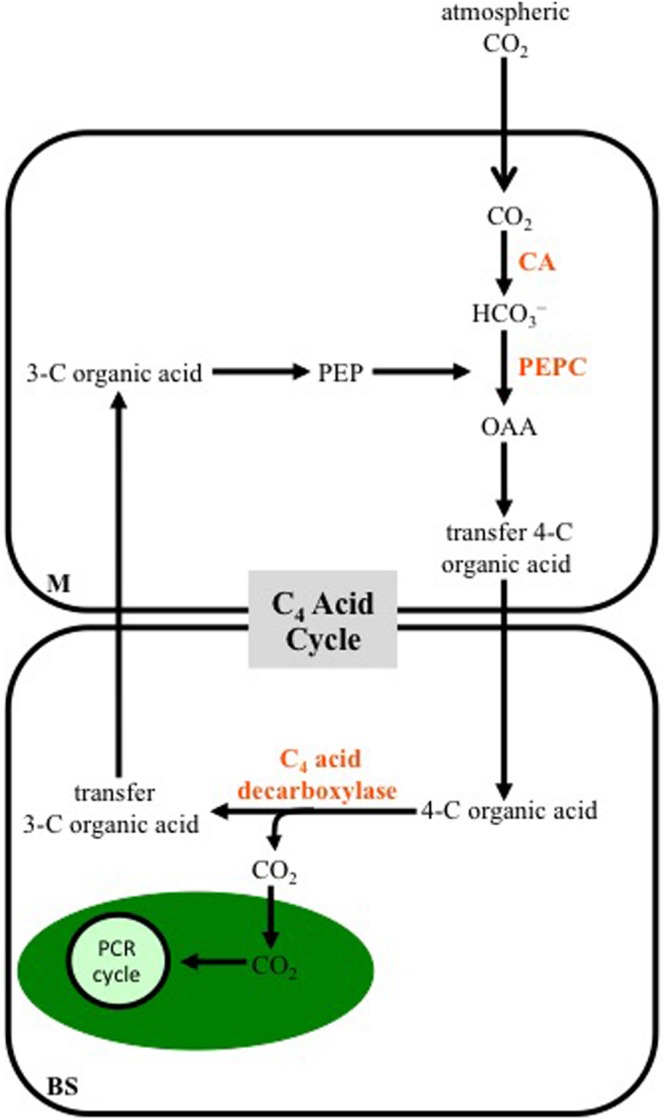FIGURE 1.

A diagram outlining a generalized C4 photosynthetic pathway. Atmospheric CO2 enters a mesophyll (M) cell of a leaf and is converted to bicarbonate (HCO3-) by carbonic anhydrase (CA). The bicarbonate is then used to carboxylate phosphoenolpyruvate (PEP) by PEP carboxylase (PEPC), producing oxaloacetate (OAA), which is immediately converted into another four-carbon (C) organic acid that is transferred to bundle-sheath (BS) cells. Decarboxylation of the 4-C acid occurs in BS cells, releasing CO2, which is fixed into carbohydrates by the photosynthetic carbon reduction (PCR) cycle in the chloroplast (green oval). The 3-C organic acid released at the decarboxylation step, is transferred to M cells, where it contributes to the CO2 acceptor pool. Note the 3-C and 4-C organic acids formed, and the intracellular location of the decarboxylation reactions vary, depending on the C4 subtype (see Figures 2–4).
